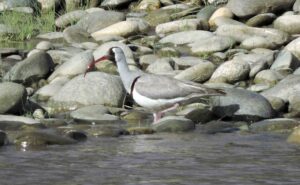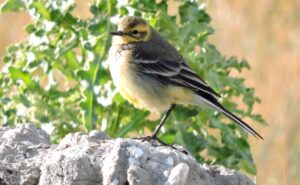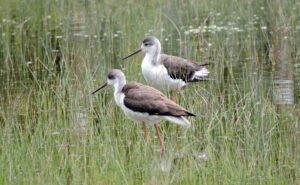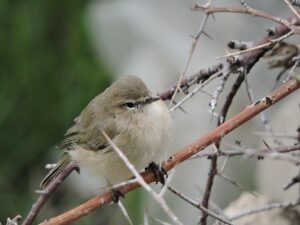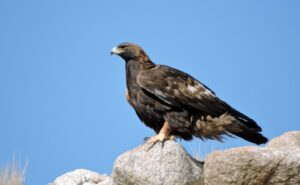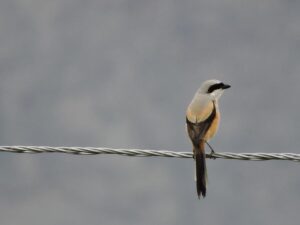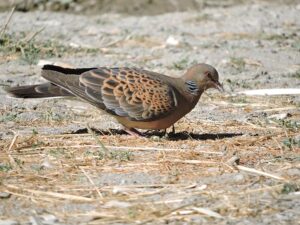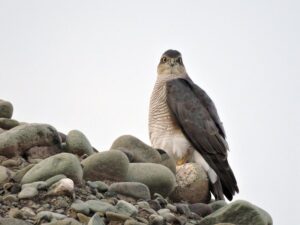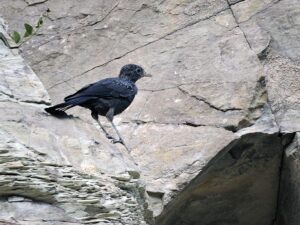The land is a home for 300+ kind of birds and mammals of different species. Many tourist also visits to see these birds and mammals of Ladakh
Birds

Birding spots of Ladakh
Ladakh being an isolated from land at a high altitude from 3300m to 4500m where people live peacefully without disturbing the nature or the animals or birds. This is why we get more than 300 species of migratory birds. Most of them visit during the beginning of summer (April, May and June). So some of the areas where birding is common are:
The Suru Valley
Located at altitude of 2700mts, Suru valley is one of the most beautiful regions of Ladakh. The valley has combinations of Scrubs , meadows & fields. The Suru valley is heart of Kargil which extends to a length of 75 kms till Panikar in south & Penzilla watershed in east. The highers reaches of valley is home to some species of birds that can be seen in Eastern Ladakh also. Some of the rare birds found here are, Long billed Bush Warbler, White-tailed Rubythroat , Firecapped Tit ,Little Forktail , several warblers,etc. The best birding spots of valley are Rangdum, Parkachik & Sanko.
The Rizdong Monastery
Rizdong monastery is located 70 kms from Leh, This is the monastery known for its high levels of monastic levels, It is one of the most remotest located Monasteries of Ladakh & have a stunning location, The monk of this monastery performs a major role in protecting the area, there is small stream & apricot groves here which is great birding place for lowland species like Brown Dipper , Wallcreeper and Eurasian Sparrowhawk etc.
Hemis National Park and the Rumbak Valley
Hemis National park is situated 40 kms southeast of Leh; Hemis is located on the banks of River Indus. The park has got area of 600sq kms with an average altitude of 3000mts. Hemis National park is known for its unique flora and fauna. It provides a great option with both mammals & birds some rare birds found here are Brown and White-throated Dippers, Robin Accentor, Wall creeper, Golden Eagle, White-winged Redstart , Lammergeier, Horned Lark , Himalayan Snowcock , Rock Bunting , Red-fronted Serin, rosefinches and mountain finches.etc. Its a great place to spot some rare mammals like snow leopard, Tibetan wild or kiang,urial, blue sheep, ibex, serow and Tibetan antelope etc.
All the pictures on this page are copyright protected, do not use or copy without permission
Shey marshes:
Shey marshes is located in the outskirt of Leh at a distance of 7 kms, The birding area extents up to Thiksey monastery, One has to cross irrigation channels to reach river. Its wetland with some great birding to offer, birds that can be seen in area are common coot, blue throat, common tern ,Eurasian Golden Oriole,Hume’s lesser white-throat, Ibisbill, little grebe,blue rock thrush , northern pintail, Eurasian Hobby,red-crested pochard , booted eagle , White-winged Redstart, Citrine Wagtail, Carrion Crow , tufted duck, common teal,Hume’s short-toed lark ,garganey, Streaked Rosefinch, plain mountain finch .
Nubra Valley
Nubra valley was off-limits to travelers till 1994, this incredible valley is located in North of Leh is approached by Khardung La Pass (5700m), the highest motorable road in the world. Nubra valley has 70km long Siachen Glacier, which is the longest glacier in the Karakoram Range. The valley has spectacular sand-dunes, small swamps and extensive buckthorn which is great habitat for some rare birds like Oriental Skylark, Tibetan Snowcock, variety of shrikes & warblers , chats and finches , ducks and raptors , winter wren , robin & alpine accentor ,Brandt’s mountain finch , white-winged redstart ,yellow-billed chough, brown dipper etc.
Nubra Valley is great place to spot some rare mammals like fox, wooly hare, pika, Himalayan marmot, lynx,blue sheep , Bactrian camel & is the only place in India to spot Cape hares
Puga Valley
Puga valley is located in close parameters of salt lake valley, Welknown for it borax & sulphur deposite this valley has offers great variety of habitat for birds, The valley has combinations meadows, marshes, streams & high rocky slopes. Theres a good variety of birds to seen at this place, including Ibisbill, Tibetan Partridge ,horned lark , Tibetan Snowcock, brown-headed gull , Eurasian Eagle-owl,ruddy shelduck , Lammergeier, common merganser, Upland Buzzard , White-tailed Rubythroat and Black-necked Crane Eurasian Jackdaw, Eurasian Wryneck, White-throated Dipper,golden eagle etc. There are frequent sightings of mammal life like marmot , blue sheep , Wolf , woolly hare ,pika, fox & weasels.
Tsomoriri Lake
Tso Moriri is situated at altitude of 4595 m . Tsomoriri is the largest of the High Altitude Lakes in India. Its a protected area officially known as “Tsomoriri Wetland Conservation Reserve”. Located in Changthang plains, Tso moriri is a fresh water blackish lake with an area of 120 sq kms. Tso moriri is one of the best birding spots of Ladakh, It the best know as breeding ground for Bar headed Geese & is the only breeding spot in india for Rare black Necked crane. The region is a breeding ground for many other species like common redshank ,ruddy shelduck , lesser sand plover etc. Birds that can be spotted here are lesser sand plover , brownheaded gull , greatcrested grebe , Accentors, rosefinches and mountain-finches , Tibetan Sandgrouse, Little Owl, Hume’s Short-toed Lark, Horned Lark, Blanford’s Snowfinch , Brahminy Starling, Eurasian Jackdaw etc. There are frequent records of mammal life like marmot , blue sheep , Wolf , woolly hare ,pika, fox & weasels.
Tsokar
Tsokar means “the white lake”. It is approx 45 kms northwest of the Tsomoriri lake. Tsokar is salt water lake & is so salty that salt extracted are still sold all over Ladakh. The wild ass can be seen grazing on the pastures on the side of the lake. There is a small gompa and the surrounding village THUKJE. Tsokar is breeding ground for Bar headed geese & Rudyshel duck. Birds that can be seen here are Black-necked Cranes, Great Crested Grebe , Tibetan Sandgrouse , Plain-backed Snowfinch , Golden Eagle, Upland Buzzard, Common Kestrel, Lesser Sand Plover , kites, harriers Little Owl etc. Tsokar is a great spot for Mammals including wolf, fox, weasel, wild ass (Kiang ), blue sheep, argali, marmot, woolly hare and pika .
Pangong Lake:
Nestled at an elevation of 4300 meters, the crystal clear brackish waters of Pangong Lake changes its color in many shades of blue and green with the changing position of the sun in the sky. About 1/4th of the lake lies in India and the rest flows into the Tibet region of China. It is a breeding point for various migratory birds such as Bar headed goose and Brahmini ducks.
Black Neck Crane (Grus nigricollis)
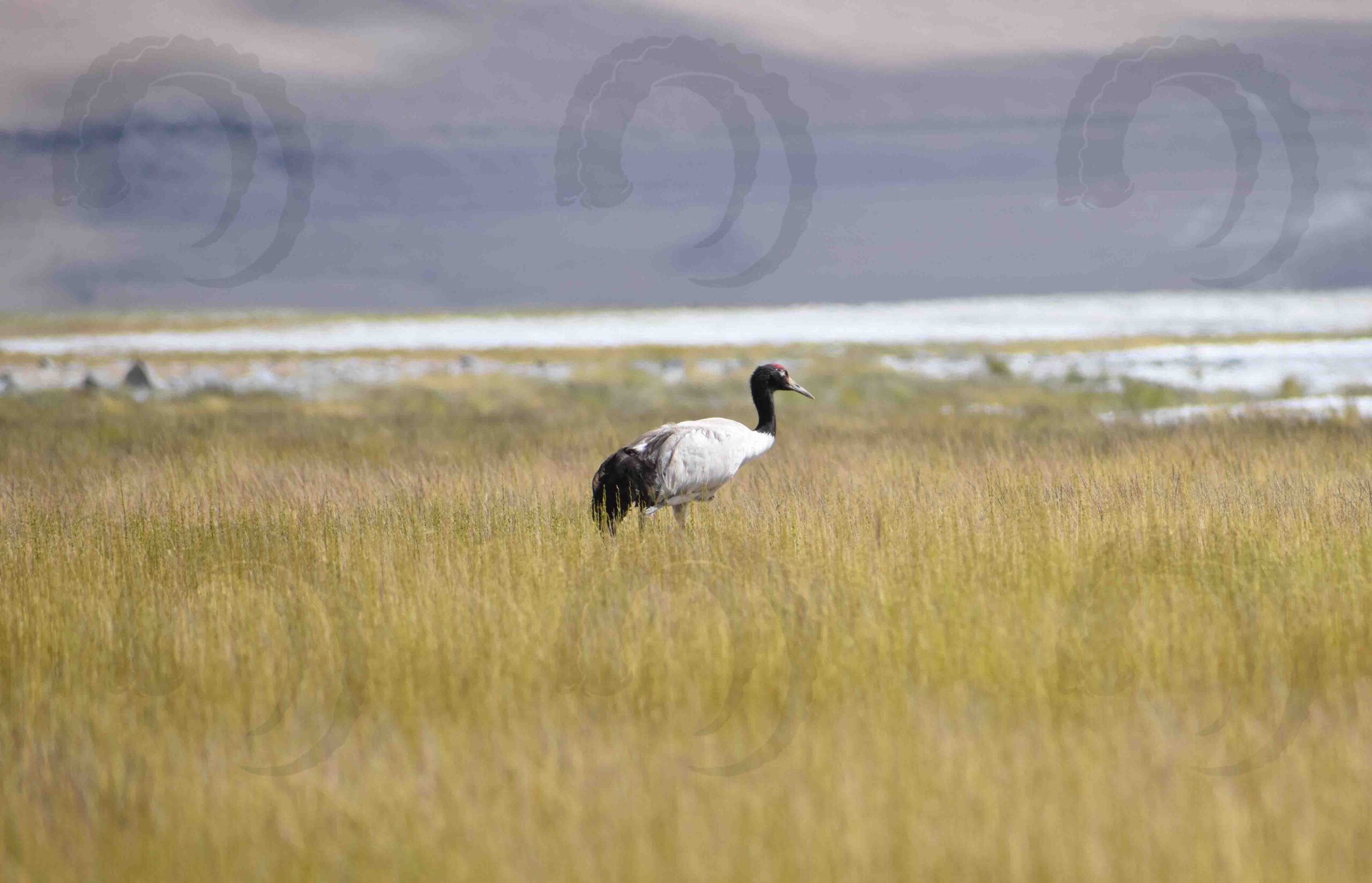
Black Neck Crane or Cha Thung Thung in Ladakhi, is one of the 15th endangered species of the cranes in the world and one of the most charismatic birds of Ladakh. It is not surprising indeed since it inhabits a region that has been one of the world’s most difficult terrains, Changthang, a region that has impenetrable one physically as well politically until recent past.
Black Neck Crane has a pale grey almost white body with black neck, head, feet and long legs. Their courting dances are probably the most spectacular in the feathered world. There are two or three breeding pairs along with several other non- breeding birds, in the high altitude marsh ecosystem of Hanle and Chushul regions of Changthang. They are also found around Tsokar Lake and Puga. A recent sensus suggest that there are around 25 birds seen in the regions of Changthang.
Mammals of Ladakh
Snow leopard (predator):
The Snow Leopard/Shan (local name) which is from Class: Mammalian, Order: Carnivore, Family: Genus Uncia and Species Uncia is the most elusive, rare and endangered big cat in the world. Snow leopard once ranged throughout the Himalaya, Tibet and China, and as far as the Sayan Mountains on the Mongolian-Russian border; and in elevation from 1800 m to 5400 m. They are extremely shy and hard to spot, and as such not well known. It is believed there are about 200 in Ladakh. Snow Leopard is smaller than the common leopard and has a bushy tail and dense grey coat. Its colouration provides the superb camouflage against the snow and rocky backgrounds which helps them in hunting and that’s why they are also known as “The Ghost of the Snow”. They are the solitary hunters and hunts during the day. Their favorite prey includes: Wild Sheep’s, Wild Goats, Urial, Ibex, Bharal, Tibetan Gazelle, Tibetan antelope etc.
Lynx
Numbering only few in Ladakh, these wild cats
Wolf
Tibetan Sand Fox
Ibex
Yak
The Yak (Bos grunniens or Poephagus grunniens) is the most notable and the largest animal of the cold desert. First described only a century ago by the famous Russian naturalist– explorer, N.M.Przewalski, the wild yak is definitely more imposing than its placid domestic counterpart. Immensely shaggy and weighing about a tone and about 5 ft. at the shoulder, it has curved horns whose tips can be as wide apart as 90 cm. over the curves. It can easily be distinguished by its long black hair, which is tinged with gray at the muzzle. Spending its summers at a height above 4,270 m to 6,000 m, in winter it moves in herds to the lakes, marshes and lower valleys. Despite its massive size, if domesticated, Yak is a very gentle animal and can be safely handled. Since from centuries, it has been used for wool, meat, milk and to carry the burdens.
Tibetan wild ass (
The Tibetan wild ass (Ladakhi: Kyang) is one animal that visitors can expect to see from the comfort of a vehicle, if they take a jeep tour on the Changthang. Favoring the rolling grasslands of this area, their natural curiosity makes them fairly easy to spot, despite the relatively low numbers, about 1500 individuals.
Tibetan antelope (Panthelpos hodgsoni)
The Tibetan Antelope or “Tsos” in Ladakh or “Chiru” in English is an endangered and the most unfortunate wild animal in Ladakh. Early in the 20th century the Chiru was seen in herds of thousands, surviving on remarkably sparse vegetation, but they are vanishingly rare now. It has been hunted for its fine under-wool (Urdu: shahtoosh, Ladakhi: tsoskul), which must be pulled out by hand, a process done after the animal is killed. This shahtoosh is valued in South Asia for its light weight and warmth, but more than anything else, as a status symbol. Owning or trading in Shahtoosh is now illegal in most countries. They can be found at elevations of 10,650 to 18,000 ft. There are believed to be only 50,000 to 70,000 Chiru left in India and China. In india, Ladakh is the only place where you can see them.
Bharal (Pseudios nayar)
Bharal or the Blue Sheep or Nyapo has the largest population and the widest distribution of any of the mountain ungulates in Ladakh. In fact this species is neither blue or Sheep, it is classified as intermediate between Sheep and Goat. Although it looks like a Sheep but it behaves like a Goat.
The Wild Sheep (Ovis ammon hodgsoni)
The Tibetan Argali or Nyan in Ladakhi has massive horns up to 145 cm and is the Largest of all wild Sheep’s. They are mostly found in the region of Changthang. They are mostly related to the magnificent Marco polo Sheep from Central Asia. It is believed that there are only few hundreds of them are left in Ladakh. When they get old, most of them die because of unbearable load of their own horns.
Smallest Wild Sheep (Ovis orientalis vignei)
Te Ladakhi Urial or Shapu in Ladakhi, is the smallest wild sheep in the world and is found along the edges of mountain that bound the Indus valley. Their body weighs up to 85 kg and the horns measures up to 99 cm. Its habitat brings it into competition with domestic flocks, and this had led to the reduction in its numbers. It is also counted as one of the endangered species and so there are only about 500 of them are left in Ladakh.
Some Other Animals are like
- Pallas’s cat (Otocolobus manul)
- Wolf (Canis lupus)
- Tibetan sand fox (Vulpes ferrilata)
- Dhole (Cuon alpinus)
- Brown bear (Ursus arctos)
- Stoat (Mustela erminea)
- Mountain weasel (Mustela altaica)
- Stone marten (Martes foina)
- Eurasian otter (Lutra lutra)
- Musk deer (Moschus chrysogaster)
- Himalayan marmot (Marmota bobak)
- Long tailed marmot (Marmota caudata)
- Silvery mountain vole (Alticola argentatus)
- Royle’s mountain vole (Alticola stoliczkanus)
- Cape hare (Lepus capensis)
- Wooly hare (Lepus oiostolus)
- Plateau pika (Ochotona curzoniae)
- Ladakh pika (Ochotona ladacensis)
- Nubra pika (Ochotona nubrica)
- Large-eared pika (Ochotona macrotis)
- Royle’s pika (Ochotona roylei)
To customise Bird watching or Snow leopard Sighting trip, plz contact us

